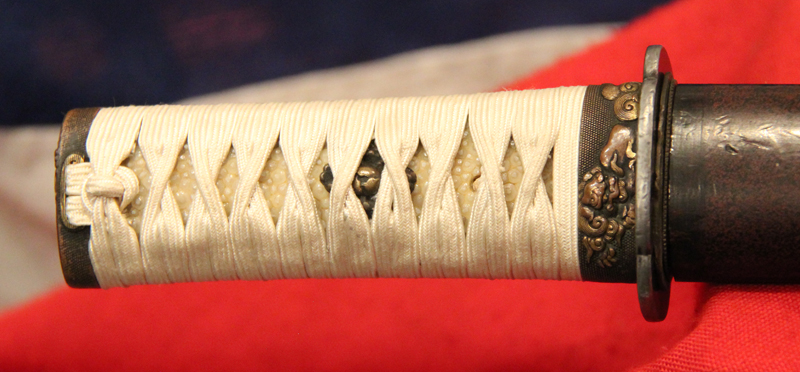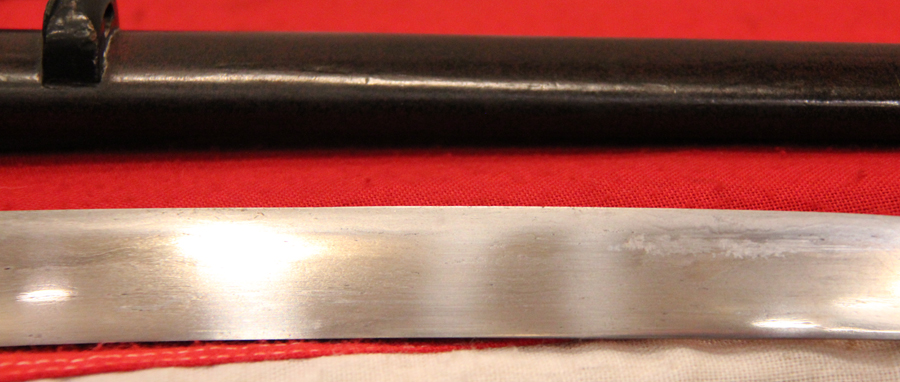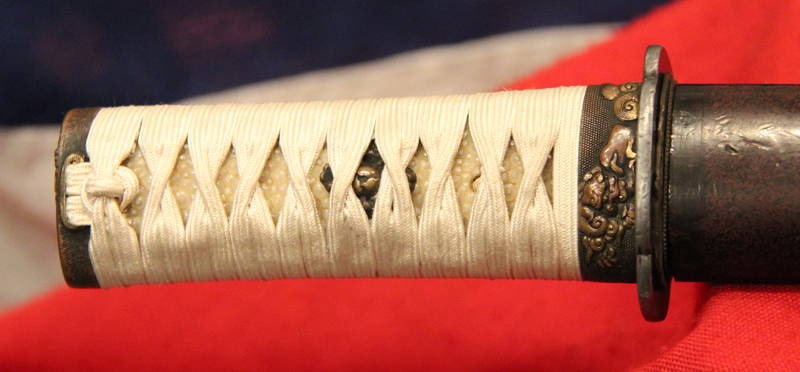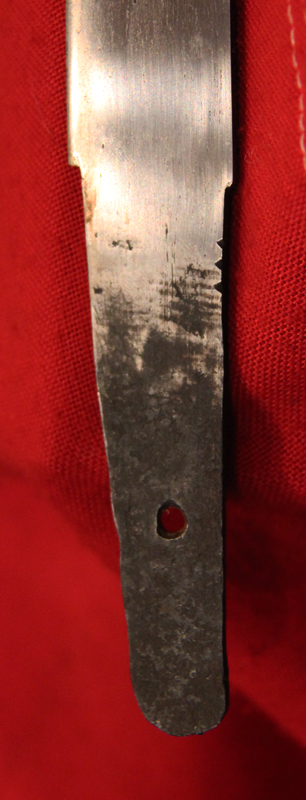Most Attractive Koto Period Tanto Around 600 Years Old Imperial White Ito
Fitted with an original suite of mounts from the Edo period, decorated with fine gold and patinated copper takebori of shi shi lion dogs. Original Edo brown laquer saya, with kodzuka pocket {to fit a utility knife if you have one}.
This is a most handsome ancient samurai dagger from the muromachi era, with a jolly nice early blade showing good running itame grain in the hada.
In the Nambokucho era, the tanto were forged to be up to forty centimetres as opposed to the normal one shaku (about thirty centimetres) length. The tanto blades became thinner between the uri and the omote, and wider between the ha and mune. At this point in time, two styles of hamon were prevalent: the older style, which was subtle and artistic, and the newer, more popular style. Blades could be of exceptional quality. As the end of the period neared, the average blade narrowed and the sori became shallow. 3 interesting and deliberate small cuts made into the tang. Not part of the mounting process so added by the dagger's owner. On western antique weaponry this often means each cut represents a vanquished foe. In Japanese culture it may mean the same, or may not, but either way it is most intriguing. 10 inch blade from tsuba to tip. 16.3 inches long overall in saya.
Code: 21612










